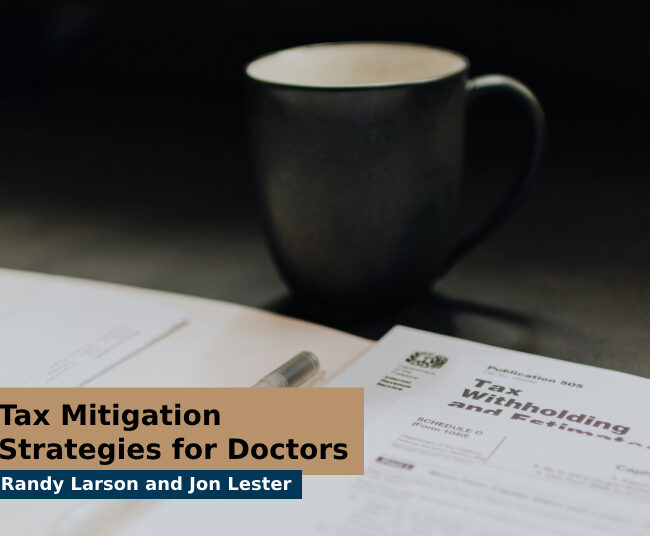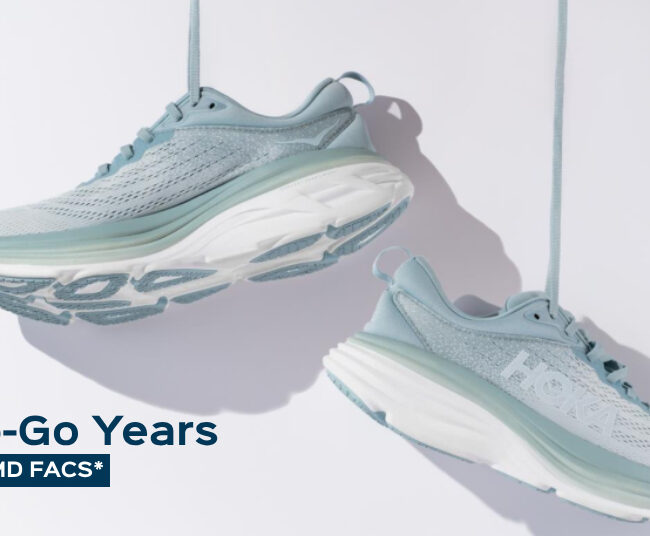Change The Frailty Slope

Written by: Terry Tsue, MD FACS*
Unlike the Geico commercial where we turn into our parents, recent findings have shown a variable interaction of genetics in determining your longevity. Even luck plays a role, but lifestyle and lifetime experiences have a strong influence on your biological “Time” predisposition.1 Like everything in life, you can only change what you can change. Well before we witness the people around us transition from go-go to slow-go, frailty begins to rear its head. The initial signs can be subtle and the progression is inevitable, but you can influence the frailty slope steepness. Saving the best for last and above all the Health Tsue-isms from the last post, the two most crucial slope-influencing areas are Movement and Nutrition:
Change the frailty slope
I remember having endless energy to play sports well into my 20’s (the Eveready-Bunny-go-go years). Endurance wasn’t the rate limiter, only time and skill were. Subsequent years pitted work productivity against physical fitness. The non-negotiable accelerating natural decline of health becomes manifest daily. Unfortunately, we see daily how the lack of fitness and its ensuing frailty impact the successful treatment of disease. Frailty measures like grip strength and the sit-rise test are directly associated with mortality later in life.2,3 The slow-go and then no-go years come a lot sooner and denser than we expect when we are out of shape.
Sometimes you have to hit bottom in order to pull yourself up. I have a lot of ground to make up, and a long way to go to be where I need to be. I’ve been immersing myself in learning what fitness science says for the common man. I’m NOT shooting for the ironman endurance or the Abercrombie & Fitch body, just being “super medium”. Early in my recovery journey, I am trying to focus simply on 3 main areas: 1. maintaining and building muscle mass, 2. cardiorespiratory fitness and 3. improving flexibility and mobility.
A. Middle-age sarcopenia is normal and occurs at a rate of >0.5% annually. Loss of muscle mass and strength are the major contributor to aging frailty. I used to think it was a waste to spend any ATP on lifting a weight for no functional purpose. What a “dumbbell” I was. Dumbbells are now my best friend. Maintaining or even building some muscle mass also directly predicts future mortality. I use an asynchronous virtual program since I’m a relative novice and bad weightlifting can cause injury. There is a difference between lifting for muscle hypertrophy versus strength, so invest in professional help. My wife and I do this together as a relationship and accountability booster.
About 1/4 of people >65 years old have a fall annually. They are the leading cause of injury and injury-related death.4 Being in the sandwich generation, as well as taking care of older cancer patients, I’ve observed two areas of specific frailty vulnerabilities in strength, agility and balance that I want to stave off as long as I can: lateral movements and ground-to-standing elevation. I believe it’s never too late to give extra focus to counter the “increased” gravity we experience as we age.
- Standing and walking tend to be mostly anterior-posterior in nature and seem to remain affected the latest. I believe weakness in the less common lateral movements sneaks up and leads to more balance issues. BTW there is a safer way to fall that you should learn if you haven’t (https://www.health.harvard.edu/staying-healthy/how-to-fall-without-injury). I had a high school P.E. teacher that drilled this into us. Practice this so it will become instinctual muscle memory when it happens unexpectedly. Protect the melon.
- The first 2 feet off the ground are the hardest. Try it without using your arms and you’ll see how weak you feel compared to the common movement of standing up from a chair. These muscles don’t care if you are sitting up or falling down. One of the central activities of blue zone centenarians in Okinawa is ground level gardening.
- In addition to focusing on these two specific physical challenges, we are giving extra attention to strengthening our “core”. It plays a role in absolutely everything, especially in staving off the #1 cause of life disability years: low back pain.
- BTW vision AND hearing both impact fall rates as we age, so protect both senses!
B. Out of eight modifiable lifestyle factors, exercise provides the biggest longevity boost (46% decrease in all-cause mortality).5 Movement improves cardiovascular mortality as well as cancer risk, sleep, weight maintenance and even mood. Sitting is the new smoking. Humans used to average 20,000 steps per day, but nowadays it’s down to less than 5000/day. I use a smart watch pedometer and heart rate monitor whose mobile app tells me how long I am in each CDC heart rate intensity zone. I try to overshoot because of the concern for the smart watch count accuracy. It appears that weekend warrior fitness can be as cardiovascularly effective as more regular exercise activity.6 Even slow running for 5-10min a day is impactful.7 It’s important for you to be you for ultimate success and sustainability. But just remember, no challenge, no change.
Most of us already have significant activity incorporated into our daily lives (e.g., running between rooms in clinic, standing in the operating room, etc.). You can step this up another vigorousness level with speed, distance, rucking and elevation (more on this in the future when we talk about N.E.A.T.). Success with this next-level approach doesn’t mean exercising more, just better. No elevator rounding, walking faster between the office and clinic, standing desk table (10-34% boost in calorie burn compared to sitting), parking in the far lot, going cart-less at Costco. Although you may be ahead of the average person, a dedicated self-investment in your cardiopulmonary fitness is the most crucial modifiable factor that you can do to build the strongest health foundation and lengthen your Time.
A Jedi mind trick I use on myself to keep things interesting is cardio activity variation. Many different exercises get your heart and breathing rates up. Outside activity when the weather is tolerable, vary the activity (i.e., bike, walk, run), tempo (i.e., long distance, Tabata), scenery (trails, hills, cityscapes) and accompanying entertainment (i.e., podcast, partners, music genre). Varying conversation usually shouldn’t cut it because you should be having difficulty holding a normal conversation if you’re in the right exercise zone.
Keep track of your progress with a mobile app because your subjective sense of progress can be discouraging. Objectively you will begin to see it’s harder to get your heart rate up with similar activity and your endurance time increases. Everything (knees, back, attitude/mood, etc.), I mean everything, feels better with improved cardiorespiratory fitness.
C. The ergonomics in health care are abysmal. Operating at the side of patient looking down and to the side through your loupes, sitting at the exam room computer trying to type and look at the patient behind you. Very little has been designed in our world to safely preserve normal human posture and function. Also, everything we do to accomplish A & B above also wreaks havoc on your flexibility and mobility. Maintaining muscle length (flexibility) and joint ROM (mobility) are crucial to fighting frailty and minimizing injury risk. Like sarcopenia, its an inevitable decrescendo that warrants our attention. I didn’t learn this until later in life, hopefully not too late. I still feel like a steel I-beam, especially in the hips, knees and ankles. I never knew that the specific stretches exercises to address muscle length and joint range are different, and you need to practice both. It’s been like the tin man with an oil can, but I still have a lot of making up to get to super medium.
You are what you eat
Food plays many important roles in my life: supporting a healthy body journey, body weight maintenance, fighting off chronic disease, and enhancing social relationships. Recommendations for the best things to put into our bodies seems to change monthly, but what my wife has narrowed us down to is best described as a “Californian Asian Mediterranean diet”. This pretty much covers almost every type of food that can be prepared in a healthier fashion, even pizza!
A. Staying healthy takes caloric energy and building blocks, mostly protein and fats. Make sure you have enough and the right nutrition to grow to where you want to. Your weight may or may not change (a little) as you get in shape, as heavier muscle replaces non-muscle. Guess what, added incentive, muscle burns more calories than fat!
B. Someone taught me that “my feet can never outrun my mouth”. I was never able to get to my desired body weight (50lbs ago) through exercise alone without good nutritional habits. When I chronically overate, I gained weight despite how much exercise I did. Weight maintenance, like exercise, is a lot easier than trying to trim pounds. BTW research shows that interval exercises suppress appetite better than steady exercise, so I’ve changed my routines. Again, Jedi mind tricks (not rocket science) that work for me:
- I try to only eat when I am hungry, and I try to avoid getting over-hungry (gets me in trouble every time)
- I eat slow so my brain can catch up to my stomach stretch receptors (I drink a sip of water and put my fork down between bites). Conversation between bites is good too. I’m always the last to one at the table! Chopsticks slow my eating down. Longer chopsticks not only improve food enjoyment and but slows eating (wish I had that NIH grant).8
- Subliminal portion control: My wife only lets me eat off small plates (Remember the size of our parent’s old plates), cuts portions into smaller sizes (artichoke halves and not wholes), and keeps the food dishes away from the eating table (I have to get up to get seconds!).
- Protein makes you feel fuller faster and longer, I make sure I eat enough at every meal. Greek yogurt is one of my go-to sources, but nuts are a great source as well. A few hundred calorie nut snack can tie you over if it’s not meal time yet.
- Variety (i.e., color, texture, smell, temperature) as well as spice-enhanced flavor (non-salt alternative) help with meal satiation. This variety and spice-derived flavor also helps us avoid any added salt. Appreciating every different bite also slows the eating down. Try eating a Kaiseki meal in Kyoto, banchan spread in Korea or Tapas in Spain.
- Seemingly random but healthier/lower calorie substitutions and techniques are common in our kitchen. Amazingly without sacrificing flavor. Replace calorically higher density components with less dense ones (e.g., more protein and less fat). Greek yogurt can replace mayonnaise and sour cream (add some vinegar for some “sour”). Half & Half for full cream if you need the cream flavor, but not the whipping consistency. Olive oil can be used in many recipes in lieu of less healthy oils. I use mustard as a dipping sauce instead of ketchup (D.Y.K., 0 calories in yellow mustard!). Marinading uses less sauce (and thus, less sugar) than adding the sauce on top at serving time.
- I drink a lot of water and tea during meals, especially between bites. Again, think gastric stretch receptors.
- I stop eating when I am full, and Okinawans (blue zone country) stop when they are 80% full. I don’t have that sensitive of a gastric meter yet, but I do know what it feels like to be full or over full.
- I still struggle with the “poor starving kids in Africa” concept. The maximal efficiency drive and minimal “muda” (Japanese term for wastefulness) in me frequently tempts me into overeating by cleaning my plate. I try to decrease that temptation in front of me as much as I can, especially when something is delicious. When food prepping those massive Costco supply portions, my wife breaks them down into small two-person portions. Not only are these easier to cook, but it avoids the guilt-induced overeating of overcooking big portions. This minimizes leftovers in the refrigerator and helps with that variety mentioned above. Hard to do with a houseful of rapidly hypertrophying kids, and definitely simpler for us empty-nesters. Restaurants are the main temptation bastion of large portions, not even considering the all-u-can-eat buffets. To-go containers are common in our refrigerator. In fact, to decrease the chances of inadvertently overeating at a restaurant, I ask for the to go container and fill it BEFORE I even start eating.
- I weigh myself nearly every morning to remind me of action and consequences. I used to count and record calories when I was deep in my weight battle. Knowledge has a powerful influence. Realizing that I had to run several miles just to burn off that pre-meal small basket of tortilla chips (10-15kcal/chip) remains eye opening for me and helps with my eating/ordering decisions.
C. I’m no nutritionist, but it doesn’t make sense to ingest stuff that leads to or exacerbates the most common chronic diseases (i.e., CAD, diabetes, HTN). We try to eat organic (if not unreasonably priced), low/no salt, and more fish and plant-based. Veggies have a lot of fiber to keep the plumbing going, because even constipation has now been linked to cognitive decline.9 We try to moderate red and ultra-processed meats (where the fat is in solid state at room temp) and simple carbohydrates. The fact is most food we eat is processed to variable extent, so drawing the line with what’s ultra-processed is hard for me. We eat out plenty, but try to make good and satisfying choices.
D. Food is more than just physiologically important or a source of gratification. Meals have also been a pleasurable social event for my whole life. Many of my Why’s revolve around the food meal axis. It’s a neutral safe ground that can bring different parties together, but also deepen current relationships around a common denominator. It’s a two-for-one: enjoyment from the food, but also the experience itself. The experience can start well before the dinner table, with the growing, harvesting and preparing. Digging razor clams in the surging surf, hunting hidden pine forest mushrooms, calling in a wild turkey to your decoy, or fighting the king salmon on light tackle.
The meal itself can also be full of novel adventure, like in-table cooking Korean BBQ, eating Ethiopian spicy vegetables with your hands unrolling injera bread, or using a wood mallet on Old-Bay-spiced Maryland blue crabs (plastic bib in place). When you are having to work for your bite, you also eat slower!
Even after the last bite, the value of the experience continues. Honestly, some of the best family discussions, and problems solved, have been around Team Tsue dishwashing. We’ve been savoring our newly found la passeggiata ritual. An endearing Italian cultural tradition, that we have Americanized to be an outside stroll after dinner. We use it to help decrease our post-prandial glucose and Hg A1c, but the conversation is priceless.
You have to take care of yourself to be your best for others. I am learning something everyday to make my tomorrow better. What a journey!
Talk soon.
*Terance Tsue MD FACS, as Manager of TTTsue LLC
1Caruso et al. (2022) How important are genes to achieve longevity? Int J Mol SciMay;23(10):5635
2Strand et al. (2016). The association of grip strength from midlife onwards with all-cause and cause-specific mortality over 17 years of follow-up in the Tromsø study. J Epidemiol Community Health 70:1214-1221.
3Barreto de Brito et al. (2014) Ability to sit and rise from the floor as a predictor of all-cause mortality. Eur J Prev Cardiol 21(7):892-8.
4Center for Disease Control and Prevention Morbidity and Mortality Weekly Report September 23, 2016.
5Nguyen et al. (2023). Eight modifiable lifestyle factors associated with increased life expectancy among 719,147 U.S. veterans. American Society for Nutrition Annual Meeting: Nutrition 2023, Boston, MA, July 24, 2023.
6Khurshid et al. (2023) Accelerometer-derived “weekend warrior” physical activity and incident cardiovascular disease. JAMA 330(3): 247-252.
7Lee et al. (2014) Leisure-time running reduces all-cause and cardiovascular mortality risk. J Am Coll Cardiol 64(5):472-481.
8Lin et al. (2015) Influence of chopstick size on taste evaluations. Psychological Reports 116;2.
9Ma et al. (2023) Bowel movement frequency, the gut microbiome, and cognitive function in women and men. Alzheimer’s Association International Conference, Amsterdam, Netherlands, July 19, 2023.



